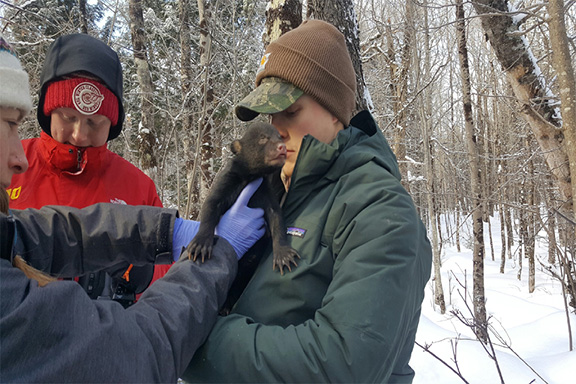Michigan Predator Prey Project
In the mid-1990s, the population of white-tailed deer in the Upper Peninsula of Michigan declined. Michigan and Mississippi State University Researchers are now estimating the effect of multiple predators on white-tailed deer fawn survival, while including information on how survival is influenced by winter conditions.


Species involved: White-Tailed Deer, Black Bears, Gray Wolves, Coyotes, Bobcats
Project partners: Mississippi State University, Michigan Department of Natural Resources, Michigan SCI Chapters
Total SCIF Investment: $500,000 + (With help from HLF and Michigan SCI Chapters)
Year SCIF began involvement: 2008 (Timeline: 2008-2020)
Project Objectives
- Estimate white-tailed deer population trends and productivity in northern Michigan.
- Determine the impact of predation on fawns and adults over multiple years.
- Examine spatial and ecological relationships between deer and their primary predators in region, including black bears, bobcats, coyotes, and wolves.
Anticipated Outcomes
Since its inception in 2008, the Michigan predator-prey project has become one of our flagship projects in North America. We have defined the relative importance of various predators (including black bears, bobcats, coyotes, and wolves), winter severity and habitat quality in white-tailed deer survival and productivity. The lessons learned have influenced harvest regulations and forest management to benefit deer in Michigan. This project was recognized for its influence on deer management by the Michigan DNR and led to the formation of the Upper Peninsula Habitat Workgroup.
Recent Project Update
Recently, researchers attended a strategy meeting in Michigan to get a first-hand report on the project. The most recent updates showed that during the spring period, they captured and collared 48 neonatal white-tailed deer. They observed 7 mortalities (2 coyote predations, 2 from bears, 1 by a wolf, 1 unknown predator, and 1 natural causes), but the vulnerable period had not passed at the end of the reporting period. They also captured 12 wolves, 3 coyotes, 1 bobcat, and 5 black bears, conducted grouse drumming surveys, snowshoe hare pellet surveys, and surveyed black bears using hair snares. SCIF and the HLF continue to support the Michigan Predator-Prey project, contributing $20,000 in FY2019.
Want to learn more about the project? Watch this video.

Since 2000, SCI Foundation has provided more than $80 million to promote science-based conservation through wildlife research, capacity building in governments, youth and teacher education, and humanitarian programs that show the importance of the hunting community in society around the world. Growth of SCI Foundation has continued to gain momentum through charitable donations from SCI members and direct grants from local chapters and the SCI organization. Throughout the world, SCI’s approximately 50,000 members and 190 chapters contribute time, talent, and financial support to local, national, and international projects.
